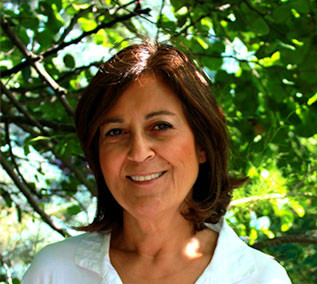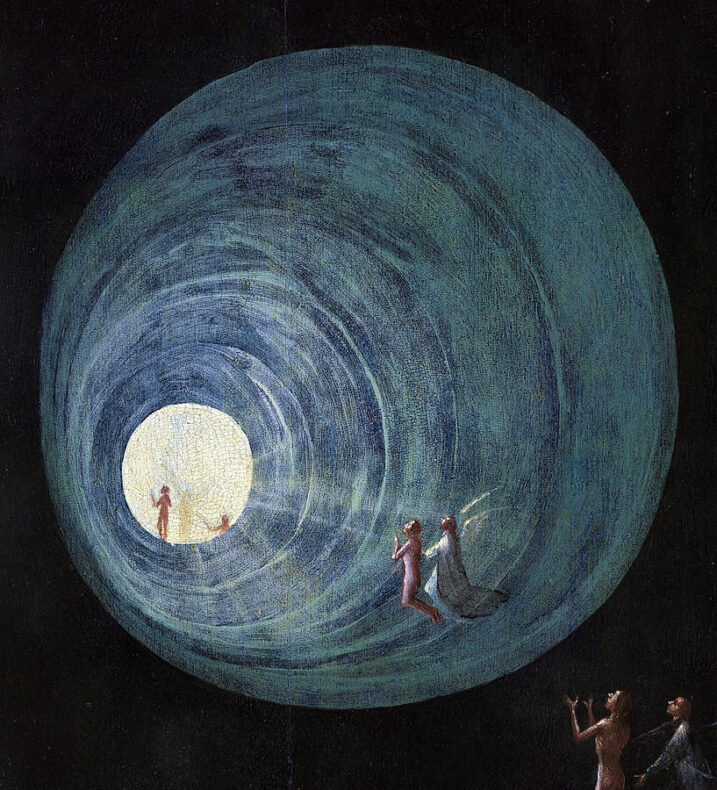
Lucidity, awareness, and “otherworldly” sensations experienced at the brink of death and awe-inspiring medical reports of notable doctors
People like to wonder, and this is the kernel of science.
– Ralph Waldo Emerson
During the Second World War, the Austrian poet and writer Karl Skala (1924–2006), went to Russia with his troops. He and his comrade, Hannes, caught under artillery fire, took refuge in a fox inn. Hannes got hit and died there. Skala, heavily wounded, experienced that they were both rising up high in the sky, and found themselves looking at the battlefield below. Feeling the weight of his friend’s dead body against his, Skala looked up and saw a bright ray of light; and while he was holding up his friend, they moved towards the light. Suddenly there was a rupture in the scene, Skala felt the pain as he was back in his body. This artillery fire left Skala deaf for life, and transformed him to a more altruistic person. He wrote five award-winning books, one among them dedicated to his comrade Hannes.
Today’s medical science defines Skala’s experience as a Near Death Experience (NDE). A vivid, extrasensory and yet conscious experience taking place during a physiological trauma or cardiac arrest, when heart beat and brain activity stop, and the patient is at the brink of death.
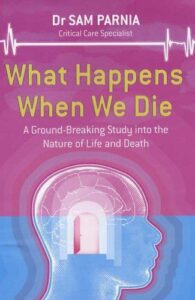 Sam Parnia, director of research in cardiopulmonary resuscitation (CPR) in the NYU Langone Medical Center, and renowned for his AWARE II research, has been studying reports of patients who have experienced NDE, as well as those of distinguished doctors from 25 major hospitals who have taken care of NDE cases over the years. He states that “ one in five people who survive CPR after cardiac arrest may describe lucid experiences of death that occurred while they were seemingly unconscious and on the brink of death, a new study shows.”
Sam Parnia, director of research in cardiopulmonary resuscitation (CPR) in the NYU Langone Medical Center, and renowned for his AWARE II research, has been studying reports of patients who have experienced NDE, as well as those of distinguished doctors from 25 major hospitals who have taken care of NDE cases over the years. He states that “ one in five people who survive CPR after cardiac arrest may describe lucid experiences of death that occurred while they were seemingly unconscious and on the brink of death, a new study shows.”
The results of his research published in medical journals in October, 2023 show that 40 % of survivors reported being conscious during the experience of death without explicit recall and 20 % recalled the experience of death.
Parnia recites :
Survivors reported having unique lucid experiences, including a perception of separation from the body, observing events without pain or distress, and a meaningful evaluation of life, including of their actions, intentions and thoughts toward others. These experiences of death are found to be different from hallucinations, delusions, illusions, dreams, or CPR- induced consciousness.
He states that since the early 1980s, NDE research have used two scales developed to standardize and compare the NDE experiences collected through interviews after the resuscitation of cardiac-arrest patients. One of them, the Greyson questionnaire is based on the most frequently encountered features in patients who survived after cardiac-arrest :
- Experiencing an altered state of time
- Experiencing accelerated thought processes
- Life review
- Seeing/ feeling surrounded by light
- Feeling of tranquility, peace and joy
- Having vivid sensations
- Extrasensory perception
- Experiencing a sense of being out of the physical body
- Experiencing a sense of an “otherworldly” environment
- Experiencing a sense of a mystical entity
- Experiencing a sense of deceased figures
- Experiencing a sense of a border, or a point of no return.
AWARE II research also included tests for measuring hidden brain activity during the cardiac arrest. In spite of the clinical “death” experience, active brain waves including so-called gamma, delta, theta, alpha and beta waves up to an hour into CPR were recorded.
He adds that many patients described that communication took place nonverbally during the NDE, and some encountered a “being of light” as they travelled through a tunnel. The being emanated love, and compassion, and made the person feel welcomed. Like a soft-spoken educator or a guide, it took the person through a review of his life in which they could both see and understand the mistakes the person has made. The majority of those who had an NDE had no doubt that it was a vision of death and beyond.
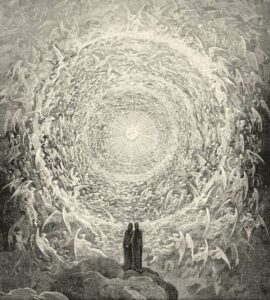
For many, the driving force that made them return was the fact that they had people to take care of as this case recounted :
…in my 40s, I had a serious car accident…I had a three-hour operation with three surgeons…I was looking down on my body lying down in bed, with doctors and nurses on both sides attending to me. I was floating on clouds, pink-tinged, like looking out of an aircraft, with a tunnel of bright light. But although it was peaceful and pleasant, I remembered my children and panicked to get to them…I then returned to my body and heard one of the nurses say, “That was a near thing ! ”

Sam Parnia recites the report of Dr. Richard Mansfield, an experienced cardiologist :
I don’t know much about these experiences but I can tell you something that happened to me that really freaked me out.
One night I was on call, there was a cardiac-arrest call and together with the rest of the team, I ran to the arrest. The patient was a 32-year-old man. On my arrival, he had no pulse, wasn’t breathing, and was in asystole [a flatline]. We continued to resuscitate him and he was receiving oxygen, as well as regular three-minute cycles of chest compressions and adrenaline. He had also atropine, but despite this he remained in asystole. We carried on for over half an hour, but then started to lose hope as he remained pulseless and in asystole throughout this time. Because he was young we decided to carry on, but eventually it became obvious that we were not winning, and so we all decided that it was time. Before stopping, I once more checked that the monitor and the connections were working and that the patient had no pulse. We then accepted that he was unfortunately dead. We were all very sad, as he was so young. I left the patient in the room with the nurses who were preparing him for the family’s arrival. I went outside, sat down by the nurses’ station and started writing in the medical records. As I was writing, I realized that I couldn’t remember exactly how many vials of adrenalin we had given him, so about 15 minutes later I went back into the room to check that. While I was there I looked across at the patient and noticed that he wasn’t quite as blue as I had left him. He definitely looked pinker. Rather hesitantly I moved over and checked his groin for a pulse. I couldn’t believe it ! Now he had a pulse ! I couldn’t understand how, but he definitely had a pulse. So we had to restart resuscitation and call the rest of the cardiac-arrest team back. We eventually managed to stabilize him and then transferred him to the intensive care unit.
A week or so later, he came back to the ward. To my amazement, not only had he recovered fully, but he hadn’t suffered any brain damage. After the arrest, everyone was sure that he would have had brain damage because not only he been through a prolonged resuscitation while he was in asystole, but also he had been left for 15 minutes afterward without any kind of CPR or oxygen.
When I saw him later, he told me that he had watched everything from above and described all that had happened in detail. He told me everything I had said and done. He got all the details right which was impossible ! To this day I haven’t told anyone because I just can’t explain it…
Dr. Douglas Chamberlain, professor of cardiology whose “ Cardiac-arrest-resuscitation Management Guidelines ”are now standard practice worldwide, had retold his experience with a patient. He was working as an army doctor at the time. One day, after prescribing drip to a patient on the ward, he had gone to the clinic. When the head nurse called him back to the ward in a rush :
“On my arrival, the patient didn’t have a pulse, so I started resuscitation. Techniques were more primitive then, but I persevered and then continued until eventually the patient’s heart got restarted. The man made a full recovery and started to tell me that during the resuscitation process, he had been at the ceiling watching me working on him.
He also went on to tell me that without wanting to sound ungrateful, he really did not want to come back ! We later discovered that the manufacturer of the drips had supplied contaminated products, and this has caused his cardiac arrest.”
Soon afterward Dr. Parnia comes across another very interesting case reported by a doctor working with acutely ill patients. Joan La Rovere, an American doctor trained in pediatrics at Harvard Medical School and worked at the prestigious Great Ormond Street Children’s Hospital intensive care unit. She told Sam Parnia a child she took care of a few years earlier:
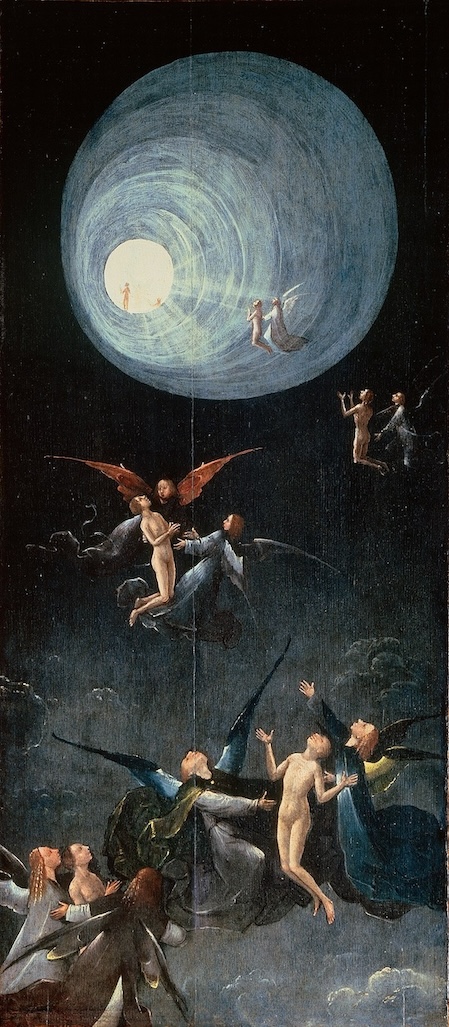
At that time I was part of a team that would go to smaller peripheral hospitals and collect sick children who needed to be at Great Ormond Street Hospital for special treatment. One evening I had gone with the rest of the team to a hospital in Kent, about 20 miles from London to collect a 9-year-old child with severe kidney failure. She was very ill and needed urgent transfer to our hospital to be managed in the intensive care unit.
During the ambulance journey, we got stuck in the rush-hour traffic, and even though we were going as fast as we could with the emergency lights on and sirens blazing, we could not travel fast enough. The girl’s condition deteriorated, and suddenly her heart stopped beating and she had a cardiac arrest. We started resuscitating her straight away in the ambulance, but the traffic really wasn’t helping. We tried over and over again and just couldn’t start her heart again.
Eventually one of the nurses said “ Look, she is dead – why don’t we drive off the main road and go to a local hospital and have her pronounced dead ? ”
Something in me said we should carry on, even though it looked as though we really lost her. I said, “ No, we will carry on with the resuscitation. If she is going to be pronounced dead, it will be at Great Ormond Street and nowhere else.”
So we carried on with resuscitation. I didn’t have much hope, but something told me to start talking to her during resuscitation. I don’t know why, but I did it, even though it made no sense to me really. Nevertheless, I kept comforting her and telling her not to worry and that she was going to be okay.
Miraculously we got her restarted almost as we arrived at Great Ormond Street. Although she was still in a very critical and unstable condition, I was pleased because we’d managed to restart her heart, and at least we had gotten to Great Ormond Street.
At that time, my job was to collect patients from other hospitals, so I never looked after her while she was in the hospital, but I heard from the nurses that she gradually improved and eventually was discharged home.
One day, many months later, she came back to the hospital to see everybody who had cared for her. During her visit, she asked one of the nurses, “ Where is the American doctor who looked after me in the ambulance and who was talking to me during the trip ? ” She had watched everything from above and had recalled all the details. I was amazed when I heard this, as she’d never even seen me throughout the trip. She had been too ill and had been on a life-support machine…”
The patients who survived NDE remembered the experience in full detail, and described a major transformation in their personalities. This is particularly the case for those who have encountered the being of light. They described losing any fear of death, and becoming less materialistic and more altruistic. Many have engaged much more in activities that would help others.
Studying the nature of consciousness at the end of life, NDE research aims at solving the mystery of human consciousness, and tapping wider questions regarding the existence of afterlife.
Duygu Bruce



